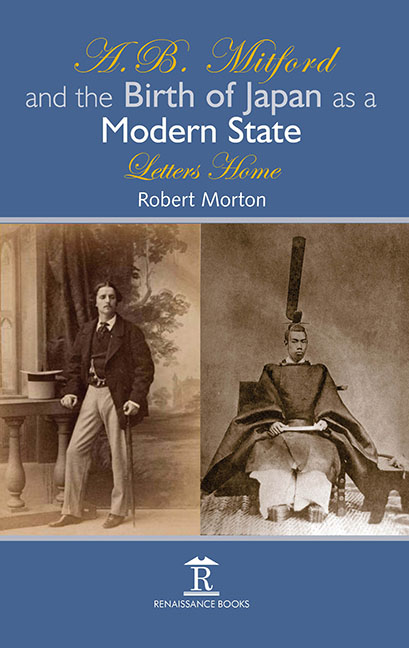Book contents
- Frontmatter
- Contents
- Foreword
- Preface
- List of Plates
- 1 Yokohama: October – December 1866
- 2 Edo: October 1866 – May 1867
- 3 The Shogun: January – April 1867
- 4 An Adventurous Journey: July – August 1867
- 5 The Birth of the New Japan: October 1867 – March 1868
- 6 Kyoto: February – March 1868
- 7 Osaka: March – July 1868
- 8 Tokyo: August 1868 – January 1870
- 9 After Japan: 1870 – 1906
- 10 The Return: February – March 1906
- 11 The Legacy: 1906 –
- Notes
- Bibliography
- Acknowledgements
- Index
6 - Kyoto: February – March 1868
Published online by Cambridge University Press: 30 April 2022
- Frontmatter
- Contents
- Foreword
- Preface
- List of Plates
- 1 Yokohama: October – December 1866
- 2 Edo: October 1866 – May 1867
- 3 The Shogun: January – April 1867
- 4 An Adventurous Journey: July – August 1867
- 5 The Birth of the New Japan: October 1867 – March 1868
- 6 Kyoto: February – March 1868
- 7 Osaka: March – July 1868
- 8 Tokyo: August 1868 – January 1870
- 9 After Japan: 1870 – 1906
- 10 The Return: February – March 1906
- 11 The Legacy: 1906 –
- Notes
- Bibliography
- Acknowledgements
- Index
Summary
Speak to me, oh moon,
Of the distant capital,
To whose woeful plight
You nightly now bear witness
On your journey’ cross the sky.
THUS THE POET Shinkei (1406–1475) pined for Kyoto. The city was the literary and artistic centre of the country and to be exiled from it was a torment for him. Even today, if Tokyo is the brain of Japan, Kyoto is its heart. Following the fighting in January 1868, the city also had a claim to be its capital again, at least of the part of the country the Emperor's forces controlled, although the Shogun was still master of Edo and northern Japan.
Kyoto had, after all, been home to the emperors for more than a thousand years, although they had been so completely hidden away that many Westerners believed their existence was a myth. Their rare audiences were given from behind a curtain and everything possible was done to ensure that they were seen by as few people as possible, and certainly not by the profane eyes of foreigners. But the times were changing and agonised discussions were going on as to whether Meiji might give an audience to the Western Ministers. Would this be a desecration, or a helpful boost to a regime whose survival was in the balance?
Mitford was unaware of these developments, only thinking that he might be able to someday have a look around the city, ‘as we seem to be breaking down every prejudice and barrier which used to lock us in’. He had no idea that he and Parkes were about to break down the biggest barrier of all.
Kyoto was probably the most dangerous place in the country for foreigners, as their presence in the ‘Holy of Holies of Japan’, as Mitford called it, would be considered most offensive. He cannot have forgotten the four hundred men that had gathered in Ōtsu to murder him and Satow for straying too close to it just eight months earlier. But if it was a choice between safety and making history, Mitford would not hesitate to choose the risky option.
- Type
- Chapter
- Information
- A. B. Mitford and the Birth of Japan as a Modern StateLetters Home, pp. 98 - 113Publisher: Amsterdam University PressPrint publication year: 2017



